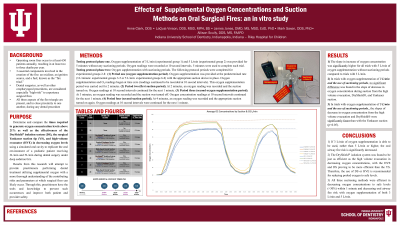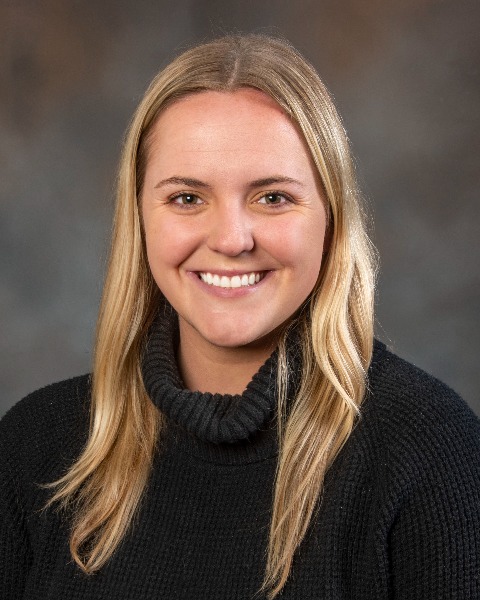Sedation
70 - The Effects of Supplemental Oxygen Concentrations and Suction Methods on Oral Surgical Fires: an in vitro study


Anne C. Clark, DDS
Pediatric Dentistry Resident
Indiana University, Bloomington, IN
Indiana University School of Dentistry, Indianapolis, Indiana – Riley Hospital for Children
Indianapolis, Indiana, United States- LW
LaQuia A. Walker-Vinson, DDS, MPH, FAAPD
Associate Professor
Indiana University School of Dentistry / Riley Hospital for Children
Indianapolis, Indiana, United States
Presenting Author(s)
Program Director(s)
The Effects of Supplemental Oxygen Concentrations and Suction Methods on Oral Surgical Fires: an in vitro study
Clark AC, Vinson LW, Jones JE, Scully AC, Saxen MA, Eckert G
Purpose: The purpose of this in vitro study was to evaluate the effect of various intraoral suctioning methods on oral surgical fire risk in procedures that use supplemental oxygen.
Methods: Oxygen concentrations in a surgical environment were continuously monitored while delivering supplemental oxygen in a simulated oral cavity. The ability of the Yankauer suction tip (YS), DryShieldÒ isolation system (DS), and high-volume evacuation (HVE) to reduce the oxygen concentration to acceptable levels ( < 30%) when administering 3 L/min and 5 L/min of oxygen were separately studied and compared.
Results: Mean oxygen levels were significantly higher for all trials conducted with 5 L/min of oxygen. No significant difference was found in the decrease of oxygen concentration from HSE, DS, and YS in trials with oxygen supplementation of 3 L/min. The decrease in oxygen concentration from the HSE and DS was significantly faster (approx. 40-45 seconds for oxygen levels decrease to less than 30%) than from the YS (approx. 1 minute) in trials with oxygen supplementation of 5 L/min.
Conclusions: All three suctioning devices effectively decreased oxygen concentration to acceptable levels in the 5-minute trials. The high-speed dental suction tip and DryShieldÒ isolation system were more effective at decreasing oxygen levels than the Yankaeur suction tip in trials with oxygen supplementation of 5 L/min.
Identify Supporting Agency and Grant Number:

.jpg)